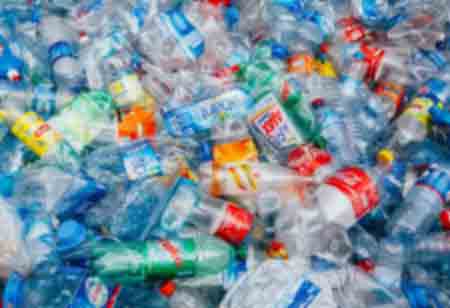THANK YOU FOR SUBSCRIBING
Man-Made Water Warriors that are Controlling Plastic Pollution in the Rivers
About 5.25 trillion pieces of plastic waste are estimated to be afloat in our oceans worldwide and polluting them, out of which 90 percent of the debris that originates from 10 prominent rivers.

By
Apac CIOOutlook | Wednesday, February 19, 2020
Stay ahead of the industry with exclusive feature stories on the top companies, expert insights and the latest news delivered straight to your inbox. Subscribe today.
About 5.25 trillion pieces of plastic waste are estimated to be afloat in our oceans worldwide and polluting them, out of which 90 percent of the debris that originates from 10 prominent rivers. Several environmental groups have designed innovative programs to intercept the river plastics before it enter the sea
FREMONT, CA: Rivers have been the source of life since the emergence of human civilizations. From Indus to Tigris and Yangtze to the Nile, rivers bore the burden of keeping these civilizations alive. A millennium later, hundreds of millions of people still depend on these rivers to grow food, quench their thirst, and make a living. Yet, without acknowledging its importance in human life, people are destroying the planet’s river systems.
The world’s rivers are subjected to unprecedented pressure from contamination, damming, diversion, and are over-exploited. The population interested to take charge of this situation is enough to arrive at a solution for plastic pollution in rivers. Still, the lack of adequate initiatives is continuing to devour our rivers.
According to the Environmental and Science Journal's report in 2020, about 5.25 trillion pieces of plastic waste are estimated to be polluting the oceans, out of which 90 percent of the debris originates from 10 prominent rivers. Many countries pursue projects without regard for their cross-border or environmental effects. Several environmental groups have designed innovative programs to intercept the river plastics before it enters the sea.
Interceptor, by The Ocean Cleanup
The Ocean Cleanup launched its river plastic cleaning device, the Interceptor that claims to catch more than 100,000 Kilograms of plastic per day. The Interceptor is an autonomous solar-powered floating device that utilizes barriers systems stretching across the width of the river to collect the plastic debris. These barriers are arranged diagonally to each other to re-route the plastic waste towards the mouth of the Interceptor.
The trash moves onto a conveyor belt, which autonomously collects and dumps the waste equally in one of its six garbage bins. A dashboard depicting the performance of the Interceptor immediately alerts the nearby operators to empty the garbage bins once they are full. At present, Interceptors are used in Malaysia, Indonesia, and Vietnam, with more planned for the Dominican Republic, and the U.S.
The Bubble Barrier, by the Great Bubble Barrier and Waternet
Waternet is a system that manages Amsterdam’s waterways by deploying five garbage boats that scoop out 42,000 kilograms of plastic each year. Waternet also uses an invisible barrier made of bubbles to collect the trash that ends up in the water.
The Bubble Barrier filled with compressed air is fixed to a perforated tube and laid across the bottom of the canal. It runs 24 hours a day, seven days a week, forming a screen that captures the floating debris. Plastic waste collected by the Bubble Barrier is tested by the Plastic Soup Foundation to estimate plastic components caught in the trash.
Mr. Trash Wheel by Clearwater Mills and the Waterfront Partnership
An anthropomorphic trash interceptor Mr. Trash Wheel has googly eyes and its own Twitter account. It has been cleaning the Jones Fall River in Baltimore since 2014 by scooping out the garbage. In 2016, a female-gendered Professor Trash Wheel and in 2018, a gender-neutral Captain Trash Wheel were launched to join the fleet. Since then, the three trash interceptors have together cleaned and collected about 907 tonnes of garbage from the river. Waterwheels power the vessels and the river current, as well as the solar panels for backup, are enabled on the system. Barriers collect the floating debris, and the wheels power the conveyor belts so that the transfer of plastic waste is easily carried out from water to the bin.
Floating Boom by CLAIM and New Naval
Being one of the five Cleaning Litter by Developing and Applying Innovative Methods in European Seas (CLAIM) projects run by the EU, a floating boom is installed at the mouth of a river for filtering out plastics. Presently the technology is installed at the Kifissos River in Athens, Greece.
The system the Floating boom works on, is a Marine Litter Containment mechanism that manually manages litter from the river mouths before allowing it to enter into the sea. The system has a highly-efficient storage design with multiple stages of harvest and storage, which can be modified after it is full.
The floating boom is also called the Tactical Recovery System Hellas, or TRASH, and is manufactured by New Naval.
See also: Top Textile and Apparel Technology Solution Companies





